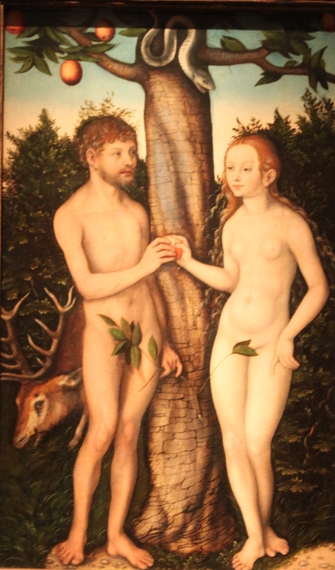Saint Valentine's Day is one of many holidays that are clustered around the beginning of spring, including the Roman Lupercalia, the Celtic Imbolic, the Chinese New Year, Candlemas, Saint Bridget's Day, Groundhog Day, and Saint Patrick's Day, as well as innumerable regional festivities. Just about all are associated in some way with fertility and with new beginnings. Historically, it is not always easy to separate these festivals, since they have repeatedly been moved in the calendar, borrowing customs from one another in the process.
Saint Valentine's Day began to emerge as a distinct celebration around the end of the Middle Ages, as it emerged out of courtly love. Even by comparison with hundreds of other saints in the Christian calendar, Saint Valentine is obscure. There were a few Christian martyrs with the melodious name "Valentine," and it is even uncertain which one the holiday is named for. According to some legends, he was a priest who defied the Roman Emperor by marrying Christians.
In Geoffrey Chaucer's Parliament of Fowles (c. 1382), Saint Valentine's Day is celebrated on the day birds choose their mates. Doves and other "lovebirds" remain an important part of the iconography of Saint Valentine's Day. The custom of exchanging tokens of love might have originated from the mementos given by ladies to the knights who would joust in their honor, which were often detachable sleeves from a garment that the knight could place on his lance, but might be almost anything.
The stylized heart that decorates our valentines today bears little resemblance to any anatomical organ. Its shape is more suggestive of a leaf such as that of a water lily. Toward the end of the Middle Ages, around the same time as Saint Valentine's Day was becoming established, the geometric design was colored red and used to represent the core of passion in human beings. It gained popularity in the Victorian era, when exchanging valentines became very widespread.
More than anything else, the "hearts" that decorate our valentines suggest an apple, such as the one Eve hands to Adam in pictures, especially from the Middle Ages and Renaissance, of the Garden of Eden. Archeologists have pointed out that apples are not indigenous to the ancient Near East, so the fruit referred to in the Biblical story of Adam and Eve would most likely have been a citron, fig, or pomegranate. In Western iconography, however, it was almost invariably an apple, probably because the Latin word "malus" can mean both "apple" and "evil."
The story of the Garden of Eden has a sort of fairy-tale ambiance that seems to set it apart from the rest of the Bible. This is reflected in the Jewish, Christian, and Islamic tradition which holds that in Paradise all animals could speak like human beings. Apart from Baalam's ass, which is really just the mouthpiece of an angel, the serpent of Eden is the only talking animal in the sacred text.
The story seems to belong to a sort of time before time, to the "once upon a time..." of fairy tales. Tradition softened the harsh ending, which was called a "fortunate fall," necessary for the salvation of humankind, and the couple were honored in the Middle Ages as saints. At least on Valentine's Day, they can "live happily ever after."
Lucas Cronach the Elder, "Adam and Eve," 1528
